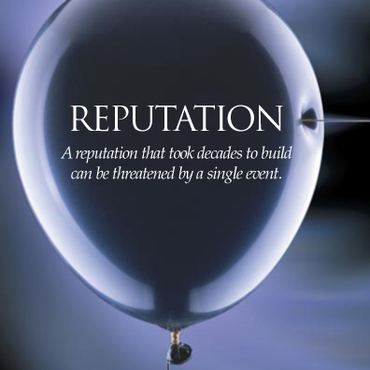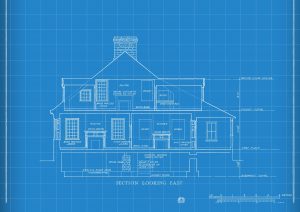And I Want It to Be A “Dream Team”
It’s interesting how sometimes when we experience things, i.e. a word, a topic or a message, it seems that the same thing will show up multiple times, in multiple places within a short period of time. Some people would say this is just a coincidence. I believe that when this occurs it is God trying to get our attention and give us some building blocks of wisdom for building our dreams.

This past week I experienced a delivery of building blocks of wisdom.
I have been spending time thinking through the pros and cons of delegating. As I have written about before, delegating is something that I suck at. I know that if I want to reach my full potential, I need to share the load. Once again, I was trying to tell myself otherwise, but God had a delivery of blocks for me.
The first shipment came while reading Nick Vujicic’s book, Life Without Limits: Inspiration for a Ridiculously Good Life. In the book he was talking about the importance of needing help and how we can all build a “Dream Team”. This immediately took me back to the 1992 US men’s Olympic basket ball team.
I connected it to delegating and the business team that I need to build. My very own “dream team”. A team of talented superstars that share my vision for the future of the company. Finding the right players is critical to building the dream.

The next load came during Michael Hyatt’s podcast, “Leadership Lessons from Martin Luther King Jr.”. Once again dreaming and leading with a vision surfaced as they spoke about his famous “I Have a Dream Speech”. King had a vision for the future, and he took action toward making that dream a reality.
Then a third and fourth load both came on different days but through the same delivery service. The Bible App on my computer delivers a Scripture of the Day, every day. On Wednesday it was Ecclesiastes 4:9, “Two people are better than one, because they get more done by working together.” Today’s Scripture was Galatians 6:2, “By helping each other with your troubles, you truly obey the law of Christ.” These sound a lot like building a team don’t they.

Too often we lose sight of our dreams and give up on them. We fall into a routine of just good enough and give up on our dreams. We should never be satisfied with mediocrity. It takes hard work and time to build a dream. If we are going to be all that God intends for us to be, we must keep pushing forward, even when we don’t feel like it. This is another benefit of a team.
There was a point in my life where I became worn down and gave up on the dreams I had when I was younger, and they were some pretty big ones. Sometimes when we ignore the building blocks God’s is delivering, He will resort to more drastic measures to make sure we get His message.
We can choose to continue working on building our dreams or not. It is up to us.

After having these blocks delivered, I decided to move forward building the “dream team” and this week added a new superstar. I’m excited to have Cathleen join the team and am looking forward to her help building a dream business.
Because I have a DREAM TEAM DREAM!



















 This is a big struggle that I have when scheduling. I know that I’m deadline oriented. If I allow two hours to do something it will most likely take twice that long. If I allow four hours, it reduces the level of urgency and I will
This is a big struggle that I have when scheduling. I know that I’m deadline oriented. If I allow two hours to do something it will most likely take twice that long. If I allow four hours, it reduces the level of urgency and I will  procrastinate. Something else will take its place. I’ve figured out that If I schedule myself short on time, I focus better, and the increased urgency will get it done faster. Figuring out your balance of accuracy and urgency can be tricky but is critical.
procrastinate. Something else will take its place. I’ve figured out that If I schedule myself short on time, I focus better, and the increased urgency will get it done faster. Figuring out your balance of accuracy and urgency can be tricky but is critical. tendency of trying to do too many things has always been a characteristic that I have been proud of. This is what movers and shakers do, right. Being a micro-manager doesn’t help either. There are just
tendency of trying to do too many things has always been a characteristic that I have been proud of. This is what movers and shakers do, right. Being a micro-manager doesn’t help either. There are just 


 There is a lot that goes into building something. I have written about how building and operating a business can be like standing in the shadow of an overwhelming mountain and the importance of having a
There is a lot that goes into building something. I have written about how building and operating a business can be like standing in the shadow of an overwhelming mountain and the importance of having a 


 more things that need to be addressed to provide customers with a WOW rather than a woops experience.
more things that need to be addressed to provide customers with a WOW rather than a woops experience.
 In 2014 we did the
In 2014 we did the






 There is something natural about the act of creating, whatever the creation may be. This is something that was implanted in us at our conception. This is God’s DNA in us. We are created in His image,
There is something natural about the act of creating, whatever the creation may be. This is something that was implanted in us at our conception. This is God’s DNA in us. We are created in His image, 

 morning and conclude by spending the rest of the day, into the evening, playing games, eating and enjoying time with family. This doesn’t mean that I don’t enjoy all the other holidays, because I do. These three are just my favorites.
morning and conclude by spending the rest of the day, into the evening, playing games, eating and enjoying time with family. This doesn’t mean that I don’t enjoy all the other holidays, because I do. These three are just my favorites.
 Having been on both sides of the employee/owner relationship I can tell you that both work hard to achieve success. If all involved work hard together toward the same goal everybody wins. It is easy to look at other people and think they have it easy, but rarely is that the case.
Having been on both sides of the employee/owner relationship I can tell you that both work hard to achieve success. If all involved work hard together toward the same goal everybody wins. It is easy to look at other people and think they have it easy, but rarely is that the case.